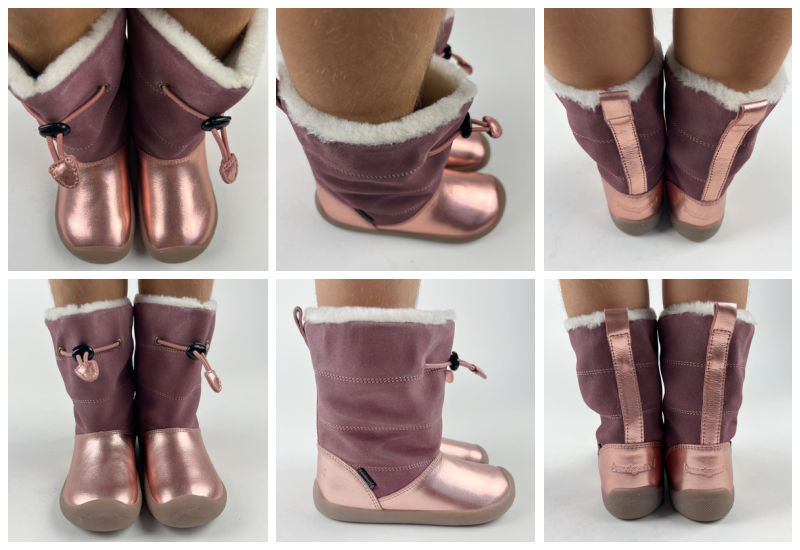Thanks to the expanding range of barefoot shoes for children, it is possible to wear healthy and comfortable shoes even in the snow. In the last comparison we described and photographed classic winter boots in detail, this time we focused on snow boots and insulated knee high shoes.
We have selected the best-selling ones for the review, but there are also other brands and models of snow boots or knee high boots available, you can find the complete range in the e-shop. Also not included here are insulated rain boots, a popular 100% waterproof version of winter boots from Bundgaard, Viking and Demar.
Comparison of basic parameters of barefoot snow boots and knee high boots
In the table you will find the basic characteristics of each model. The information is to some extent subjective, as for example heel firmness is difficult to compare accurately, but we have tried to quantify the individual properties as objectively as possible.
|
|
BRAND |
TOE BOX SHAPE |
HEEL/ANKLE |
INSTEP |
FLEXIBILITY |
WEIGHT |
|
|
WIDE |
dominant big toe/straight toes |
average/average |
average |
slightly sturdy |
slightly reinforced |
204 g |
|
|
dominant big toe/descending toes |
average/wide |
average |
slightly sturdy |
slightly reinforced |
162 g |
||
|
AVERAGE |
|
dominant big toe/ descending toes |
average/narrow |
low/average |
well flexible |
slightly reinforced |
166 g 178 g |
|
slightly curls in at the big toe/ straight toes |
average/average |
low |
well flexible |
slightly reinforced |
143 g |
||
|
NARROW |
curls in at the big toe/ descending toes |
average/average |
average |
slightly sturdy |
without reinf. heel counter |
188 g |
|
|
dominant big toe/ descending toes |
average/average |
average |
well flexible |
with reinf. heel counter |
214 g |
Comparison of sole shape and structure
Ideally, the shape of the shoe follows the shape of the foot, someone needs more room in the toes, someone needs a narrower heel, another has the toes straight towards the little toe.
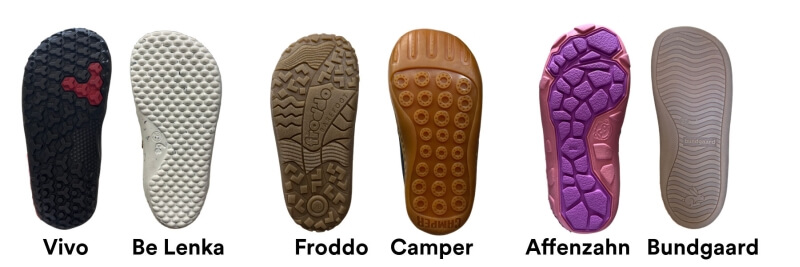
All compared models were photographed and described on a 161 x 67 mm foot, slightly higher instep, all shoes are in size 26, but for some brands a larger size would be more suitable for this foot. Only in the photo comparing the shape of the soles are Bundgaard 27.
Froddo G3160212-6
- anatomically shaped toe, plenty of room for a dominant big toe
- suitable for the average or fin shaped foot
- narrower in the heel
- suitable for average and lower instep
- sole approx. 4 mm + 3 mm tread
- zero drop
- medium firm in the heel, multiple layers of material
- with membrane, therefore only glued sole
- the snow boots can be tightened quite a bit with the elastic in the instep and around the calf, the fabric is not very strong
- the boots have a zipper on the side for easy slipping on
- the wool fur can bite sensitive children, after a while of wearing it will improve

Froddo G3160207
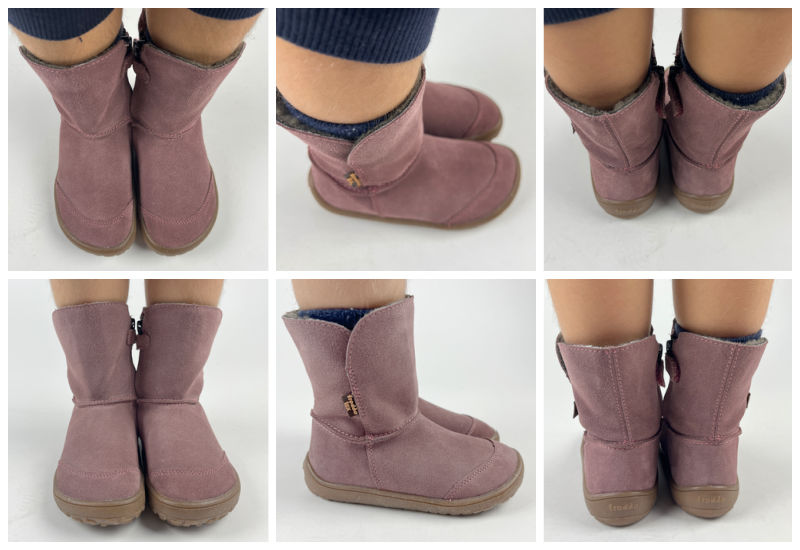
Affenzahn
- anatomically shaped toe box, curls a bit at the toe, not ideal for the dominant big toe
- for descending toes
- zero drop
- for average and higher instep
- roomier around the ankles
- sole slightly sturdy than most barefoot shoes
- approx. 5 mm + 2 mm tread
- without reinf. heel counter, rather soft in the heel
- with membrane and fur
- rubber laces allow only a slight tightening, the material under the laces is not very pliable
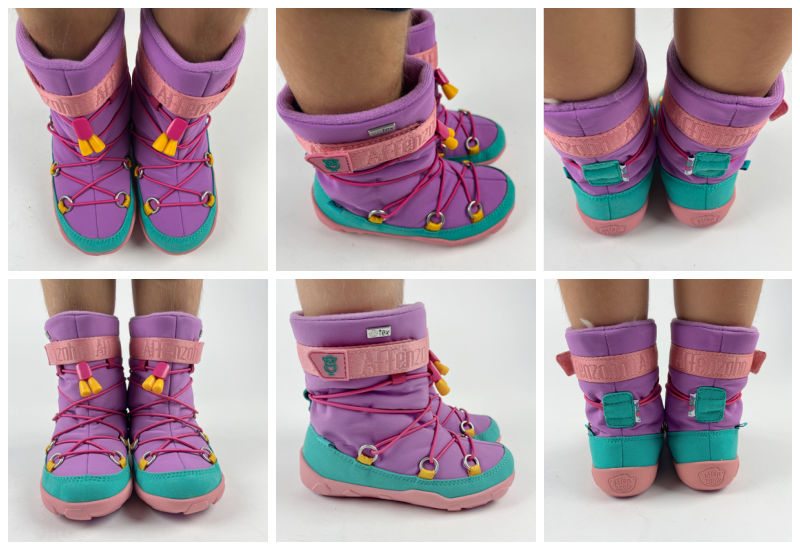
Be Lenka
- anatomically shaped toe box, very slightly curls in at the big toe
- the roomiest snow boots in the toe, but also in the instep
- for straighter toes
- narrower in the heel, also suitable for fin shaped feet
- zero drop
- for the average and slightly higher instep, very chubby feet can't fit in the shoe
- sole a slightly sturdy
- approx. 6 mm + 2 mm tread
- slightly firmer in the heel
- laces allow tightening of the upper part, but not so much around the ankles and in the instep, where the fabric is less pliable
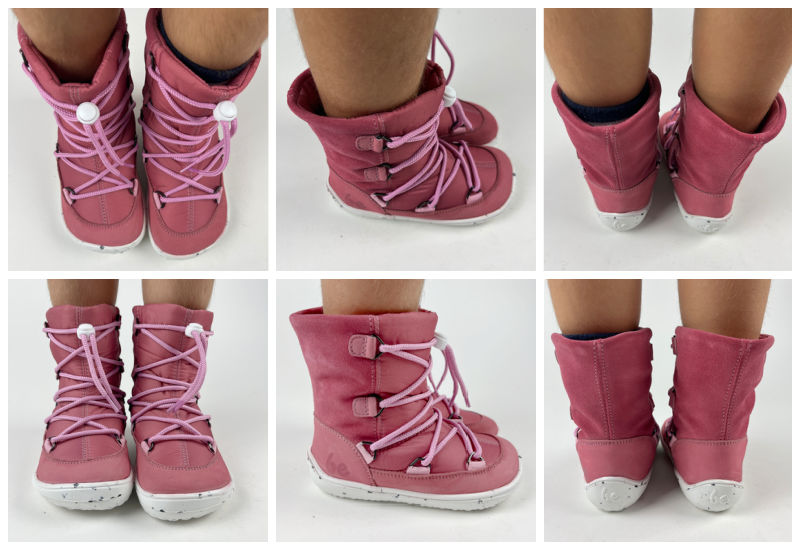
Vivobarefoot
- anatomically shaped finger part, more descending shape than Be Lenka
- average in the heel and ankles
- zero drop
- on average instep, slightly lower than Be Lenka
- sole approx. 4 mm + 2 mm tread
- slightly firmer in the heel
- tightening in the upper part of the shoe to prevent snow getting in
- membrane and reflective elements
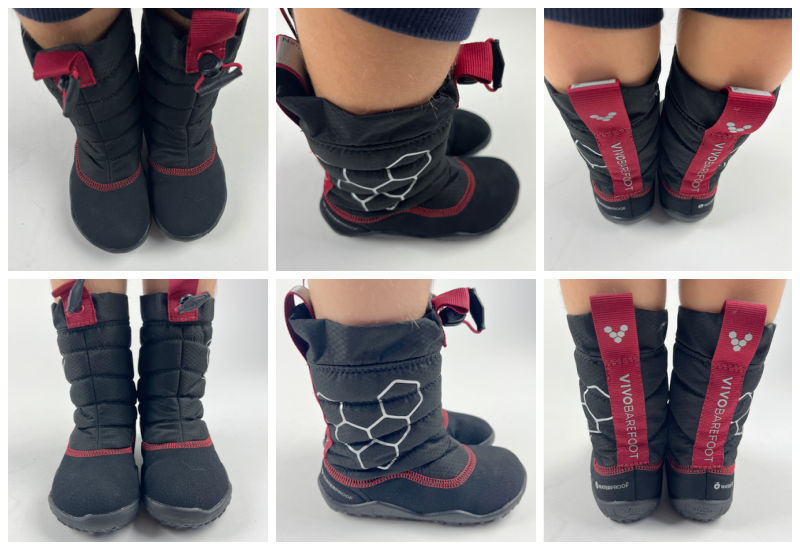
Camper
- anatomically shaped toe box, slightly curled at the big toe, not suitable for a strongly dominant big toe
- for straighter toes
- for average and low instep
- heel not significantly tapered
- sole fully flexible
- approx. 4 mm + 1 mm tread
- firmer in the heel
- without membrane, boots more for dry winter, for the city
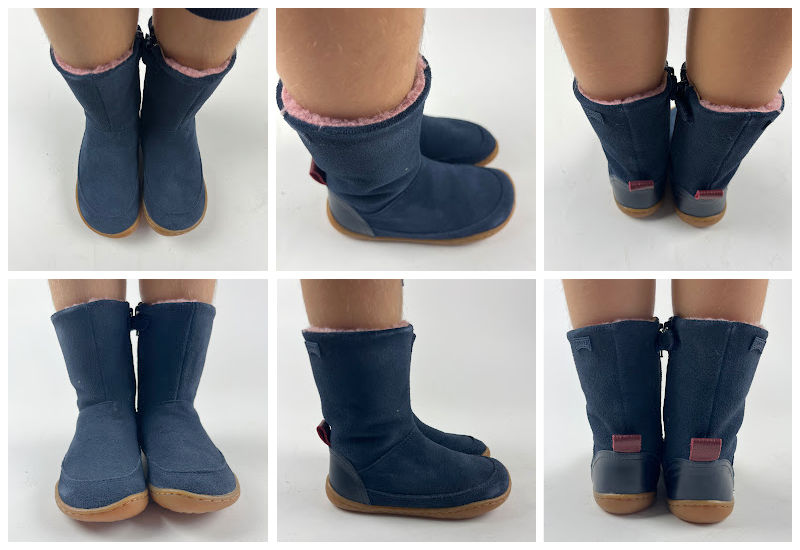
Bundgaard Walker Pull
- anatomically shaped toe box, also suitable for dominant big toe, but overall narrower in the toe section
- straight in the toe
- for average instep
- for average heel and ankle, wider in the calf area
- sole fully flexible
- approx. 4 mm + 1 mm
- reinforced heel counter
